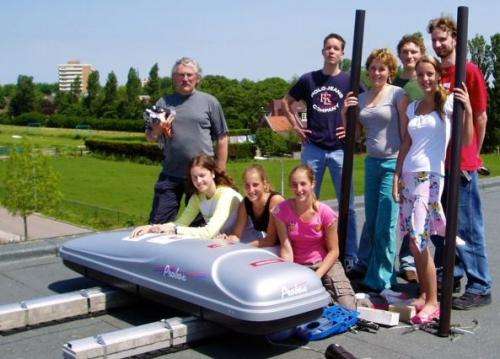PhD researcher seeks origin of cosmic rays

As cosmic ray particles penetrate our atmosphere, they collide with air molecules and produce new high-energy particles. These particles, in turn, are involved in further collisions. The whole process is known as an air shower. "People have been researching cosmic rays for a century now, and we still don't know much about the origin of these high-energy particles," says David Fokkema, who recently obtained his PhD at the University of Twente. He defended his PhD thesis about cosmic rays on 17 October.
Dr Fokkema's PhD research was carried out in the context of the HiSPARC science and outreach project (HiSPARC is a project in which secondary schools join academic institutions to create an extensive network with the aim of measuring extremely high energy cosmic rays). Fokkema's research focused on measuring the direction of these "air showers". Most of the detectors used for this purpose were installed at secondary schools. These measurements provide information about the sources of cosmic rays.
Fokkema's method is based on observed differences in the time at which particles arrive. These differences arise when the cosmic rays strike the atmosphere at an angle, rather than perpendicularly. However, there are uncertainties in the measurement of the arrival times. These are caused by the thickness of the shower front, the geometry of the detectors and other experimental effects. These uncertainties have been studied, to determine their exact impact on the result. "The methods developed in this PhD thesis were first verified in simulations. I then analysed data from a HiSPARC station that we installed at KASCADE, in Karlsruhe, Germany. The KASCADE experiment (which covers an area of 200m × 200m) provided us with an independent measurement of the direction of the air shower. Given its high level of accuracy, the HiSPARC station yielded some very useful results."
There are two sides to HiSPARC. On the one hand, it is a traditional research group consisting of researchers, Master's students, and undergraduates. However, this project is also intended to give secondary school students an opportunity to help with the experiment and to take part in scientific research.
More information: The PhD thesis entitled: "The HiSPARC cosmic ray experiment. Data acquisition and reconstruction of shower direction" is available for inspection.
Provided by University of Twente














